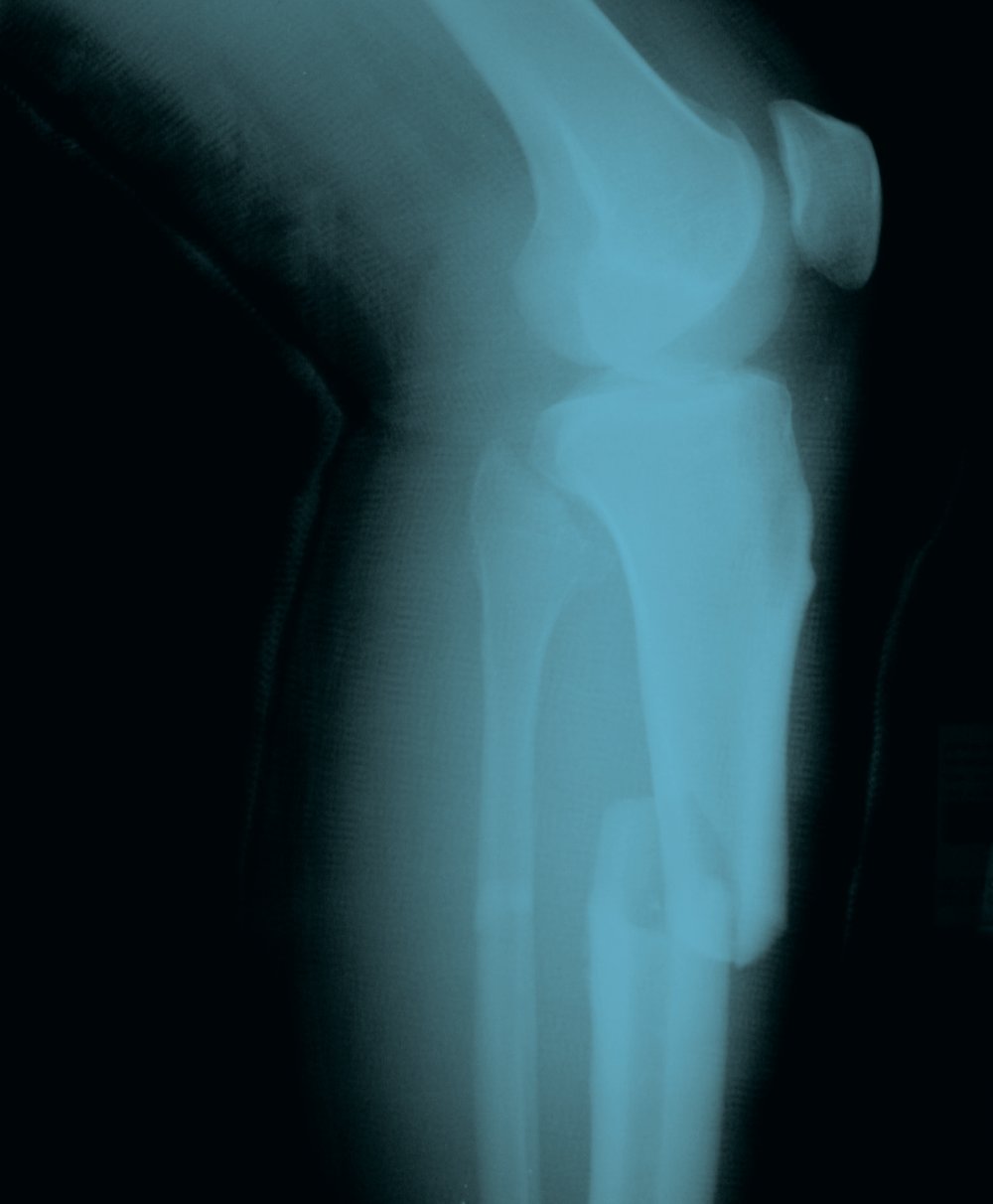
Issue 064
July 2010
Corey Hill fractured his right tibia and fibula in December 2008 when his leg kick was checked by Dale Hartt. He required surgery to repair the break, which involved placing plates and pins in the leg, and then again months later to remove some of the hardware.
What is it?
There are two long bones in the lower leg that make up the shin: the tibia and the fibula. Either of these may be fractured (broken).
How does it happen?
The bone may be fractured by a direct impact, such as when checking a shin kick, or from a twisting force or a fall.
Stress fractures can also occur when there is repeated strain on a bone, such as when running or skipping. They are most likely to happen when there has been a sudden change in training program or increase in volume of training. Running in poor-quality trainers or doing a lot of mileage on hard surfaces such as concrete may also increase the risk. This type of fracture is not always visible on an X-ray, especially in the early stages of injury.
Long-term overtraining, making frequent large weight-cuts or maintaining an unhealthily low body-weight may cause some fighters to be particularly vulnerable to fractures.
Who has it happened to?
Corey Hill fractured his right tibia and fibula in December 2008 when his leg kick was checked by Dale Hartt. He required surgery to repair the break, which involved placing plates and pins in the leg, and then again months later to remove some of the hardware. In January of this year, 13 months after the initial injury, he made his comeback and beat Jason Trzewieczynski by unanimous decision.
Treatment?
Treatment depends on the type of fracture. Stress fractures are treated by resting the bone as much as possible from activities that involve putting weight on the limb. They may require a cast or brace to support the bone.

Breaks that occur as a result of a traumatic injury may or may not need surgery, depending on whether the bones are displaced. Sometimes plates, rods or screws are needed to hold the bones in place while they heal. These may or may not be removed later on. Usually a cast and crutches will be required for at least several weeks.
Once the bone has healed, a period of rehabilitation will be needed to strengthen the leg before it is safe to return to normal training.
How long can a fighter expect to be out for?
Shinbone fractures can be slow to heal, and a bad break may take six months to a year or even longer to heal. Stress fractures will usually take 2–4 months (or more) of rest to heal, before beginning a gradual return to training.
What problems can it cause?
At the time of injury, there may be damage to muscles, ligaments, nerves or blood vessels. An injury that breaks the skin or one that requires surgery carries a risk of infection. The fracture itself can cause problems if it heals badly, and some fighters have found that plates and screws implanted to repair the injury have caused ongoing pain or difficulty upon returning to their normal training.
Ankle or knee movement may be affected, and sometimes the leg may be slightly shorter after the injury than it was before. Over time, this may potentially lead to problems in the hip or lower back. Even in the best-case scenario, it may take a fighter some time to regain confidence in using the injured leg as normal. Good rehabilitation is crucial for a fighter wishing to make a successful return to the sport, and it is well-worth seeking expert advice from your consultant, or a physiotherapist or osteopath specializing in sports injuries.










